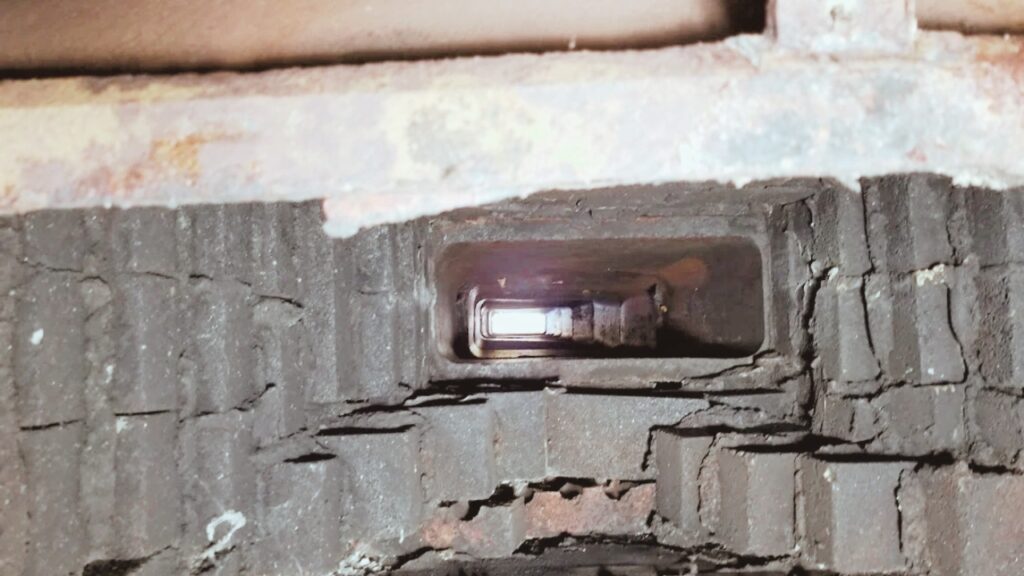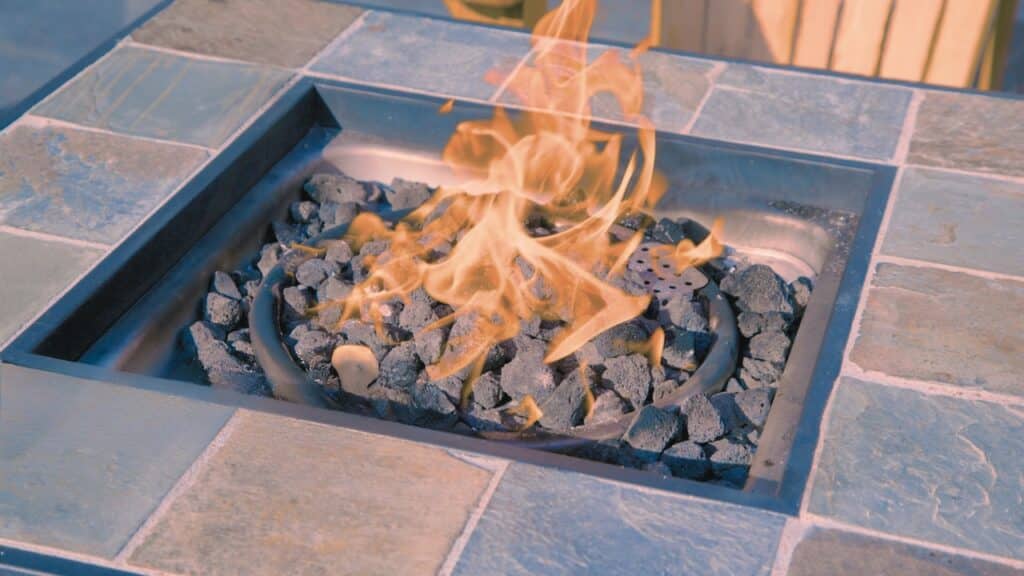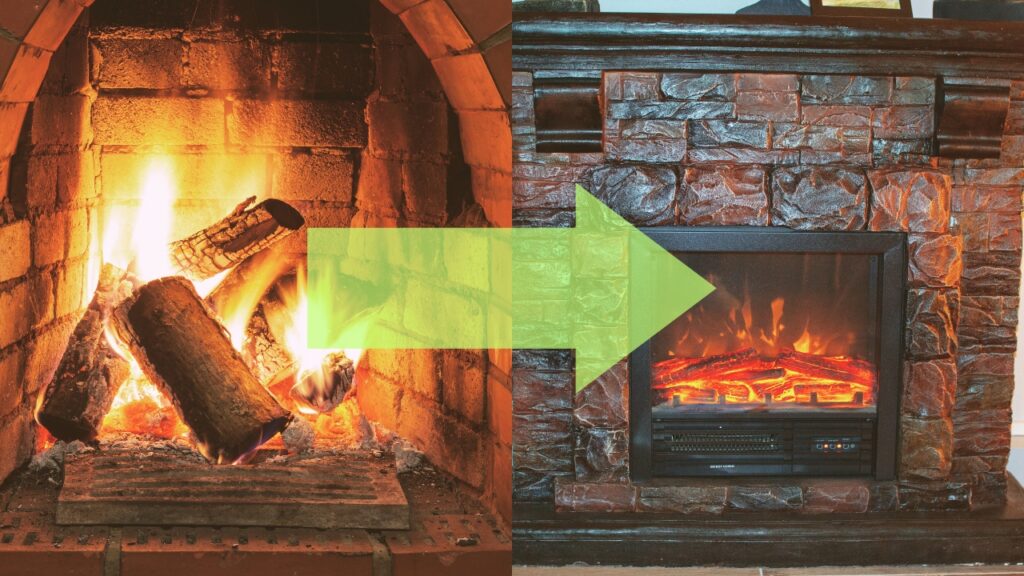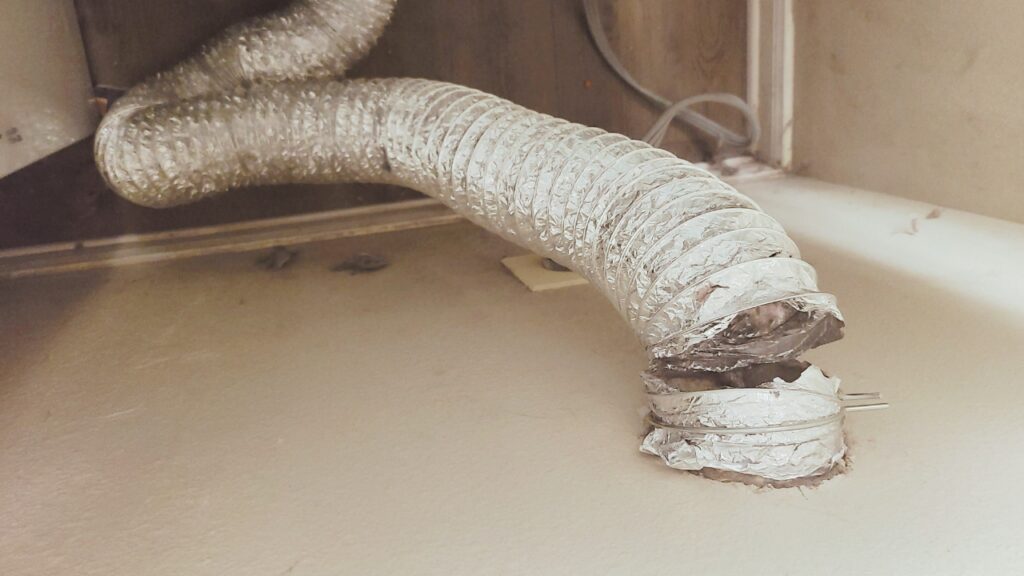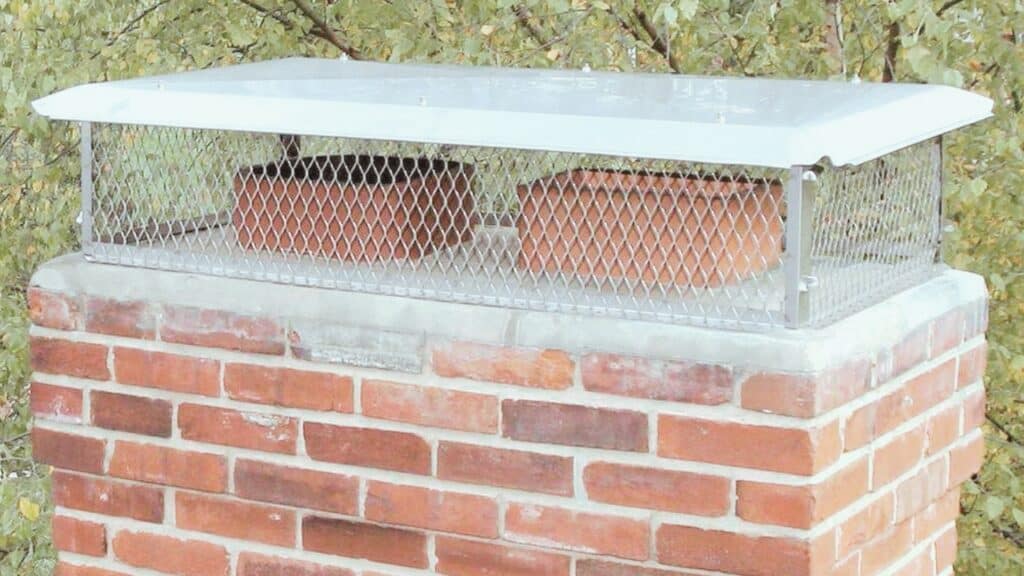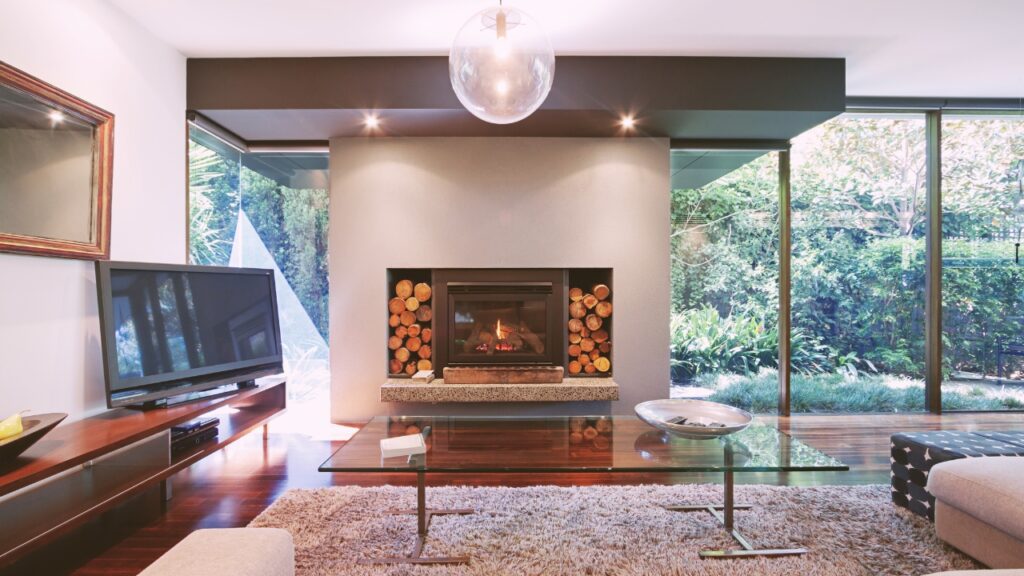A fireplace is an important part of your home as it provides heat during cold weather and adds aesthetic appeal to your home.
When you mention fireplaces, most people picture the traditional masonry fireplace. But there is another fireplace type that has gained popularity over the past three decades-the prefab fireplace.
Unlike masonry fireplaces, prefab fireplaces are easy to install and are not that costly. If you are considering installing a prefab fireplace, it is important to know about it. This will help you decide if it’s the best option for your home.
In this guide, we will discuss everything you need to know about a prefab fireplace, from the types to how much it costs to install a unit.
What is a prefabricated fireplace?
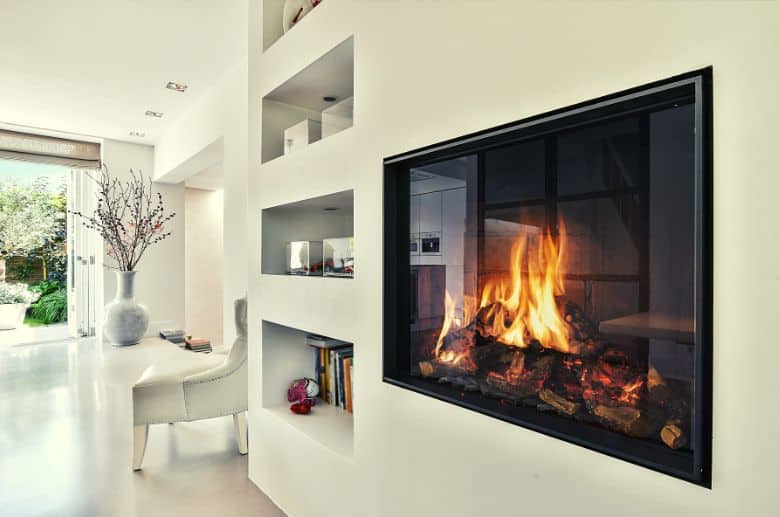
A prefabricated fireplace is a type of fireplace that is made in a factory. It is also referred to as a factory-built or manufactured fireplace.
Unlike masonry fireplaces that are made of brick and mortar, factory-built fireplaces are made of metals like stainless steel. A prefab fireplace unit comprises components like a firebox, flashing, firestop, and flue pipe.
Another common feature of prefabricated fireplaces is refractory panels that resemble bricks. The panels protect the firebox from the extreme heat produced by the fire, increasing its lifespan.
Prefab fireplaces are usually tested for safety and efficiency by the manufacturer. This means you never have to worry about the quality of a factory-built fireplace when considering adding one to your home.
If you decide to install a prefab fireplace, ensure you use the services of an experienced chimney sweep. If you don’t install your fireplace properly, it will be inefficient and put you at risk of deadly house fires.
You also need to follow the manufacturer’s instructions regarding the maintenance of the unit and the right materials to use when replacing damaged or worn-out components.
——
Do You Need to Hire Chimney & Fireplace Expert?
Get free quotes from qualified experts near you. No commitment required!
——
How does a prefabricated zero clearance fireplace work?
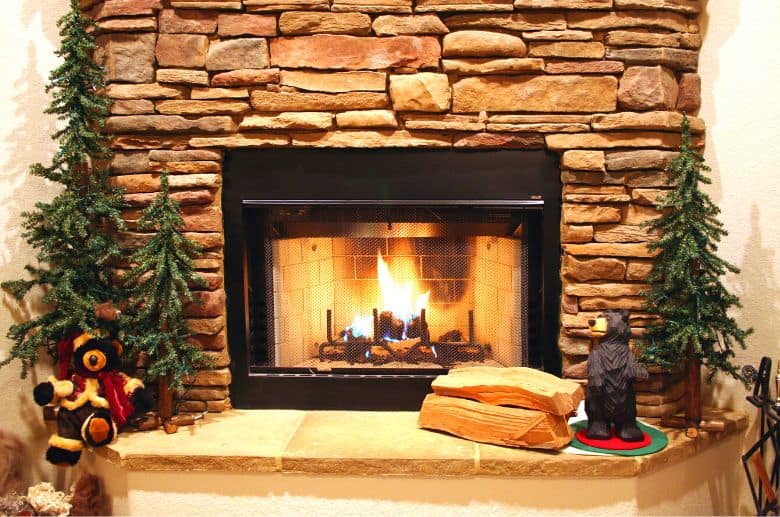
A prefabricated fireplace is designed to have better insulation than a traditional one.
It is made so that the air in your home keeps the firebox cool. This makes it safe to install near combustibles such as mattresses, nail polish, aerosol cans, and wooden items.
For this reason, a unit is typically referred to as zero clearance, meaning you do not need to create a buffer zone between it and flammable items.
You can install a prefabricated fireplace in virtually any room in your house because it doesn’t pose a fire risk.
Note that you can add refractory panels to a factory-built fireplace to prevent the heat from damaging the firebox.
Is there a difference between zero clearance and prefab fireplaces?
A zero clearance fireplace, as the name suggests, is a fireplace that is designed to reduce exterior temperatures. Its construction doesn’t allow the outside of the fireplace to get too hot.
This is why you can install a factory-built fireplace close to sheetrock, paneling, and other combustibles.
So, you do not require a large “clearance area” between the fireplace and items in your house when installing a prefab fireplace.
Many people still don’t know if there’s a difference between zero clearance and prefab fireplaces. How did the name zero clearance come about?
When homeowners started using prefab fireplaces in the 1950s, the manufacturers labeled them “zero clearance,” meaning there would be no danger if the fireplace came into contact with combustibles.
But the authorities and many homeowners complained about the “zero clearance” label. It meant the units could be placed in direct contact with combustibles instead of a few inches from them. This could lead to dangerous house fires.
The manufacturers changed the rating, but many dealers and homeowners continued to use the name “zero clearance.” The name is widely used even today. So, zero clearance and prefab fireplaces mean the same thing, and you can use them interchangeably.
How can you determine if your fireplace is prefabricated?
There are various things to consider when determining if your fireplace is prefabricated. Check for the following features:
- Materials – Masonry or traditional fireplaces are made of brick or stone held together by mortar. On the other hand, prefab fireplaces are made of metal.
- Firebox – The firebox in prefabricated fireplaces is made of metal. Sometimes, refractory panels that look like bricks are added to reflect heat from the fireplace. Fireboxes in traditional fireplaces are made of brick and mortar.
- Stack – Masonry fireplaces are characterized by brick-and-mortar stacks. Look for a metal pipe that rises above the roof in factory-built fireplaces. In some homes, the pipe is covered by stucco or simulated brick siding to give it a traditional look.
- Location – Prefabricated fireplaces are typically installed within inches of flammable items. Since masonry fireplaces are not well-insulated, there is a large space between the fireplace and combustible materials.
- Construction – Prefab fireplaces can be added during or after the construction of a home. On the other hand, masonry fireplaces are normally built during the construction of a home and are an important structural element. If a fireplace was recently added to an existing home, it is probably a factory-built fireplace.
Does my prefab fireplace require cleaning?
A prefab fireplace requires regular cleaning to keep it in great condition and increase its lifespan. Follow these cleaning and maintenance tips to ensure your prefab fireplace serves you for many years.
Remove ash
You should remove ash from the firebox after using the prefab fireplace. Allowing ash to accumulate inside the firebox will reduce airflow to the fire, making your fireplace inefficient.
In addition, too much ash in your fireplace significantly reduces the space you need to place the firewood.
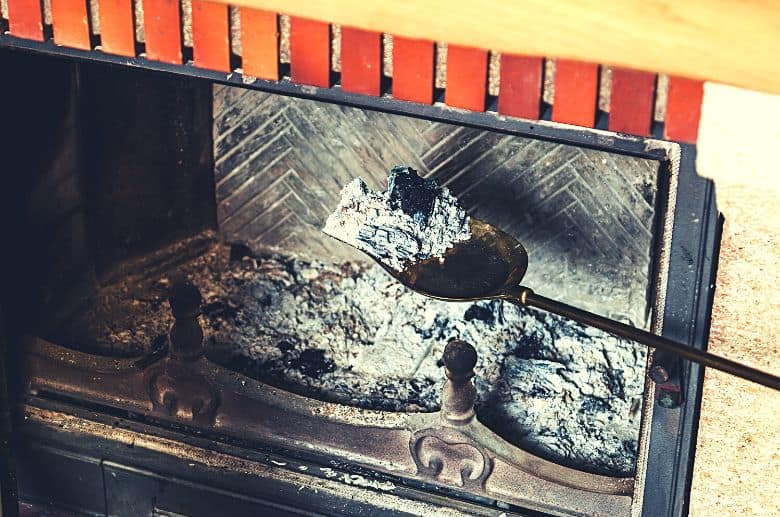
We recommend leaving a small layer of ash in the firebox (at least an inch) as it is a great insulator and makes it easier to start and maintain a fire. Also, the ash can trap embers for many hours after putting out the fire, making your home warm.
Remove soot and creosote
Soot and creosote can accumulate in the fireplace and flue pipe. Creosote is highly flammable and can cause chimney fires that can cause extensive damage and force you to replace your unit.
It is important to let a professional chimney sweep inspect and thoroughly clean your fireplace at least once a year. This will prevent the formation of excessive amounts of creosote.
Get rid of nesting material
Birds can build their nests on your chimney, especially in units with simulated brick sidings. Nesting material can reduce airflow and is also highly flammable. This means they are likely to cause deadly housefires.
Removing the nesting material yourself puts you at risk of falling from the roof, especially if you don’t have the necessary safety gear.
If you discover nesting material in your prefab chimney, call a certified chimney sweep immediately to remove it.
Don’t let the fire get too big
Most prefabricated fireplaces are rated as decorative heat appliances, meaning they cannot withstand extreme heat like their masonry counterparts.
If the fire is too big, it will damage the unit. Monitor the fire closely and keep it small to medium to prevent damage.
Install the unit properly
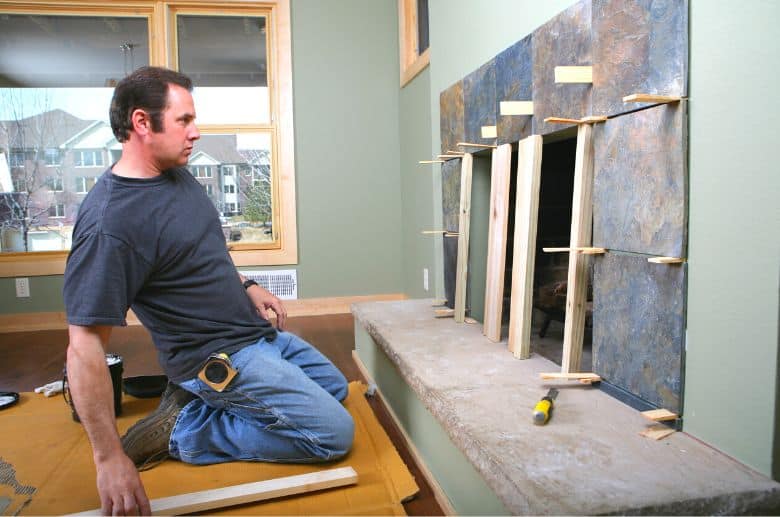
Most issues facing prefab fireplaces usually arise from improper installation. Ensure you install the unit correctly to avoid hazards like deadly house fires.
We advise against installing the unit yourself as you probably don’t have the skills and experience required to do it correctly.
If you need to install a factory-built fireplace, contact an experienced chimney sweep in your area to help you do it.
Also, follow the manufacturer’s instructions on maintaining the fireplace and the materials you should use to replace damaged or worn-out components.
——
Do You Need to Hire Chimney & Fireplace Expert?
Get free quotes from qualified experts near you. No commitment required!
——
Types of prefabricated fireplace
Prefabricated fireplaces are easier to install than traditional ones because they do not affect your home’s structure. They are classified by the fuel they use. Let’s discuss the three most popular types of prefab fireplaces.
Prefab wood burning fireplace
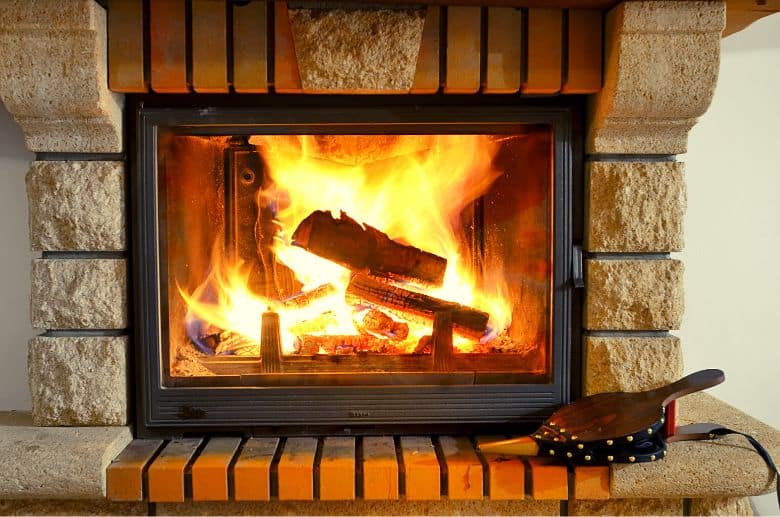
Wood is the oldest and the most popular fireplace fuel type. A prefab wood-burning fireplace brings out the look of a traditional brick-and-mortar fireplace.
These wood fireplaces use air from outside your home to maintain a fire. A zero clearance wood-burning fireplace is made of metals like stainless steel.
You can add stucco or siding to the flue pipe to create the look of a traditional chimney. Note that high-efficiency models are designed to function like wood stoves.
A prefab wood-burning fireplace is ideal if you want to avoid the high costs of installing a brick-and-mortar fireplace.
Prefab gas fireplace
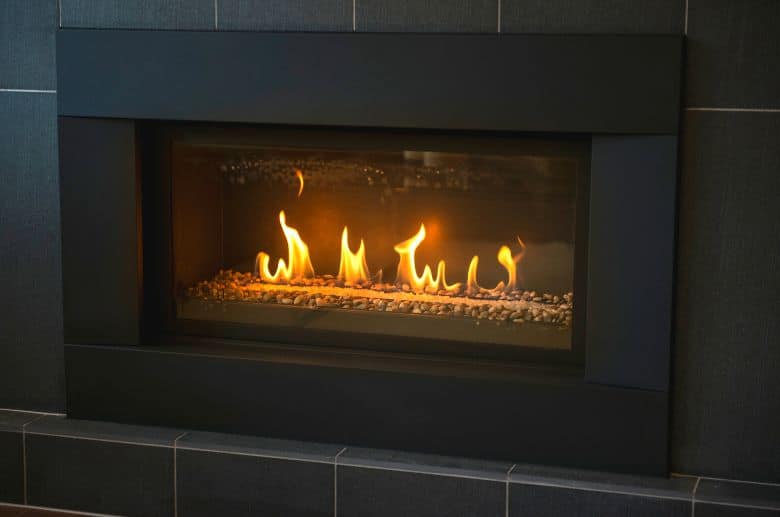
A prefab gas fireplace uses a propane line or natural gas to produce heat. Most gas units use ceramic gas logs designed to imitate actual wood logs. There are holes along the logs’ length that produce realistic flames.
There are 2 main types of prefab gas fireplaces, Direct vent and ventless.
Prefab electric fireplace
The prefab electric fireplace can be installed in any area with a power source. It is arguably the most flexible of the three prefab fireplace types.
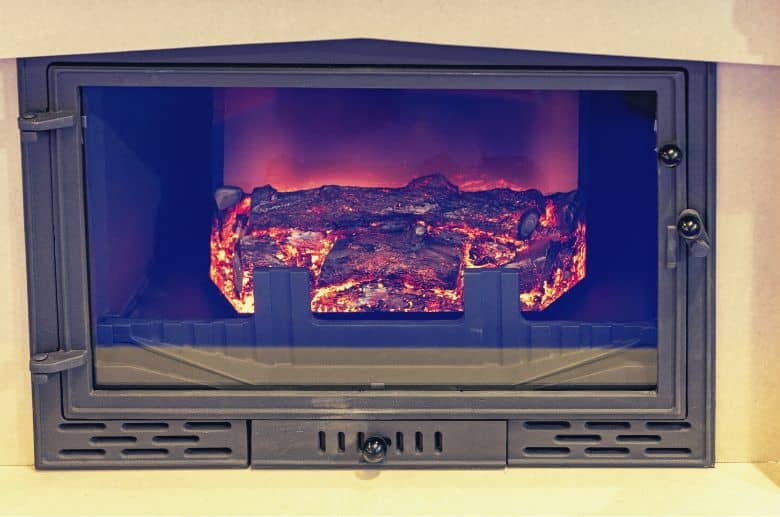
It provides a modern design, and its flames offer the traditional fireplace look that many homeowners seek. Remember that prefabricated electric fireplaces are meant to be complementary sources of heat and decorative features. We advise against having it as your main source of heat.
Does a zero clearance fireplace need a chimney?
Zero clearance fireplaces are quite different from brick-and-mortar chimneys. For this reason, many homeowners wonder if they need chimneys. Let’s discuss each fireplace type.
Prefab wood burning fireplaces – These need chimneys that extend through your roof. Wood produces byproducts of combustion like smoke and gasses like carbon monoxide. The metal pipe removes these elements from the fireplace.
Prefab gas-burning fireplaces – You do not need a chimney if you want to install a zero clearance gas-burning fireplace. You can choose the ventless or vented option. Vented models are safer than ventless ones because they prevent toxic gases like carbon monoxide from entering your home. The direct vent system is a great choice – you can install it horizontally through the wall or vertically through the roof.
Prefab electric fireplaces – A prefab electric fireplace does not require a chimney or vent because it doesn’t produce smoke and harmful gasses.
Pros and cons of prefab fireplaces
Prefab fireplaces are great, especially if installed properly and maintained as per the manufacturer’s instructions. But they also have their downsides. Let’s discuss the pros and cons of prefabricated fireplaces.
Pros:
- Affordable installation cost – Prefab fireplaces are more affordable than masonry fireplaces. This is because their installation does not interfere with the home’s structure. Also, you can install the unit in just a few hours.
- Easy to use – Prefab fireplaces are easy to operate. If you have a gas-burning or electric unit, you must flip a switch to start a fire. Some models are remote-controlled.
- Versatile – Zero clearance fireplaces are more versatile than masonry fireplaces. This is because they aren’t as heavy and do not require a strong foundation. You can install them near combustibles. This makes them great for almost all homes.
- Offer various customization options – With prefab fireplaces, you can achieve a modern or traditional look. Consult with a chimney sweeper to discover the best design for your home.
- Efficient – Zero-clearance fireplaces are well insulated, making them better at retaining heat than open masonry fireplaces.
Cons:
- Do not provide enough heat – Most prefab fireplace models are not designed to heat the entire home. They mostly serve as decorative elements and a complementary source of heat.
- Lifespan – Zero clearance fireplaces don’t normally last more than three decades. On the other hand, masonry fireplaces can reach 100 years.
What is the lifespan of a prefab zero clearance fireplace?
A zero-clearance fireplace lasts anywhere between 20-30 years. If you don’t take good care of a prefab fireplace, it will probably last less than 20 years. To ensure your unit lasts long, clean it regularly. Have the fireplace inspected and cleaned by a professional chimney sweep at least once a year.
Cost of prefab fireplace
| Prefab fireplace type | Cost |
| Prefab wood burning fireplace | $3000-$10000 |
| Prefab gas fireplace | $2000-$6000 |
| Prefab electric fireplace | $1550-$3700 |
Conclusion
Prefab fireplaces are becoming increasingly popular as homeowners seek affordable ones that provide the look of traditional ones. They are quick to install and are low maintenance. If you have a prefab fireplace, schedule yearly cleaning, and inspection with a certified chimney sweep to ensure it continues to function normally.

